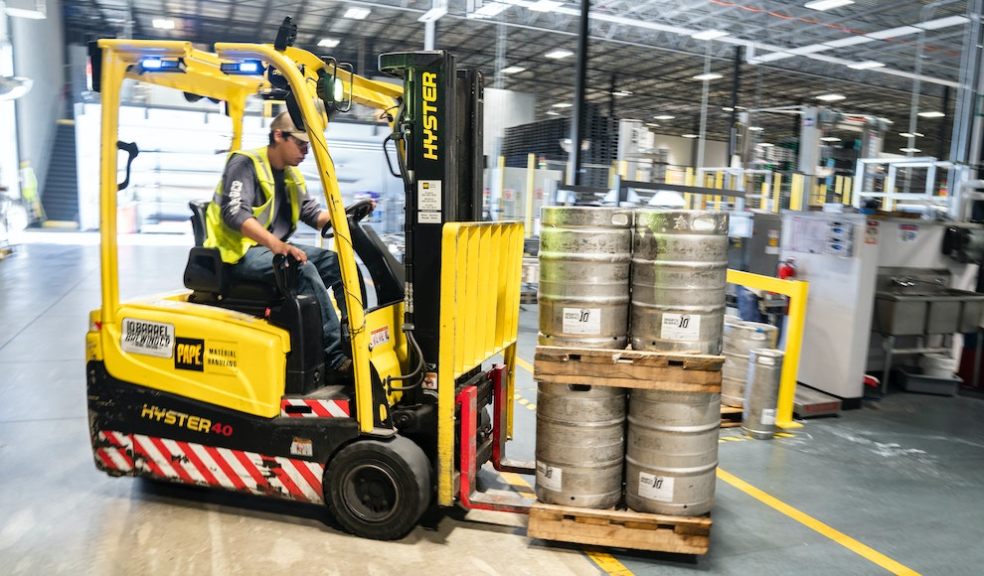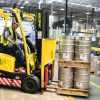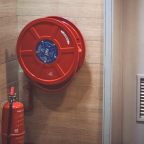
Top 7 Safety Tips for Preventing Forklift Accidents in Warehouses
Forklifts are essential tools in warehouse operations, allowing for the efficient movement and transportation of heavy materials. However, they can also pose significant safety risks if not operated and managed correctly.
To ensure the safety of workers and prevent accidents in warehouses, it is crucial to implement effective health & safety measures. In this article, we will discuss the top seven safety tips for preventing forklift accidents in warehouses and then look at what action should be taken in the event of an accident taking place.
1. Comprehensive Training and Certification
Proper training is the foundation of forklift safety. All forklift operators should receive comprehensive training that covers both theoretical knowledge and practical skills. Training programs should include topics such as forklift operation, load handling, stability principles, maneuvering techniques, and understanding warehouse layouts. Operators must also obtain a valid certification to ensure they meet the necessary competency standards.
2. Routine Maintenance and Inspections
Regular maintenance and inspections are vital to ensuring the safe operation of forklifts. Establish a maintenance schedule and conduct routine inspections of all forklifts in use. This includes checking for any mechanical issues, such as faulty brakes, worn-out tires, or hydraulic leaks. Additionally, replacing worn components with quality spare parts (from intellaparts.com and similar other services), such as seats, steering mechanisms, and mast chains, for example, can help maintain operator comfort and overall equipment reliability. Promptly address any identified problems and ensure that all forklifts are in proper working condition before each use.
3. Clear Traffic Management
Efficient traffic management is crucial in warehouses to reduce the risk of collisions and accidents. Clearly marked traffic lanes and designated pedestrian walkways should be established, minimizing the interaction between forklifts and pedestrians. Implementing physical barriers or safety bollards can further enhance safety by creating separate zones for pedestrians and forklifts.
4. Load Capacity Awareness
Exceeding the load capacity of a forklift is a common cause of accidents. Operators must be aware of the load limits specified by the manufacturer and should never attempt to lift loads beyond the forklift's capacity. Overloading can lead to loss of stability, tipping, or loss of control. Clearly display load capacity information on each forklift and emphasize the importance of adhering to these limits.
5. Safe Speed and Maneuvering
Maintaining a safe speed and using proper maneuvering techniques are essential for preventing accidents. Operators should be trained to operate forklifts at speed appropriate for the environment and load conditions. Avoid abrupt acceleration, deceleration, or sharp turns, as these can lead to loss of control or tip-overs. Use horns and warning signals when necessary to alert pedestrians and other forklift operators.
6. Proper Load Handling
Safe load-handling procedures are crucial for maintaining stability and preventing accidents. Operators should ensure loads are properly secured and balanced on the forklift before lifting. When raising or lowering loads, maintain a clear line of sight and avoid obstructing the view. If visibility is limited, use spotters or cameras to assist in navigating tight spaces.
7. Ongoing Safety Awareness and Communication
Promoting a culture of safety is essential in preventing forklift accidents. Regularly conduct safety meetings and refresher training sessions to reinforce safe practices and address any concerns. Encourage open communication among all warehouse staff, including operators, supervisors, and pedestrians. Encourage reporting of any potential hazards or near-miss incidents to identify and address safety risks proactively.
Involved in a Forklift Accident?
If you have been involved in a forklift accident, here are the steps you should take:
Prioritise Your Safety
Assess your immediate safety and seek medical attention if needed. If you are in a hazardous situation, such as being trapped or at risk of further injury, try to communicate your situation to others for assistance.
Report the Accident
Notify your supervisor, manager, or the appropriate authority within your organization about the accident as soon as possible. Provide a detailed account of what happened, including the date, time, location, and any relevant information about the incident.
Seek Medical Attention
Even if you don't feel immediate pain or notice any injuries, it is important to seek a medical evaluation after a forklift accident. Some injuries, such as whiplash or internal injuries, may not be immediately apparent. A medical professional can assess your condition and provide appropriate treatment.
Document the Incident
Take photographs of the accident scene, including any damage to the forklift, equipment, or property. If there were witnesses to the accident, gather their contact information. Keep a record of any medical treatment received and any expenses related to the accident.
Cooperate with Investigations
If there is an official investigation into the accident, cooperate fully with the investigators. Provide them with accurate and honest information about the incident. Your cooperation can help determine the cause of the accident and any necessary corrective measures.
Inform Insurance Providers
If the accident involved damage to property or vehicles, notify your insurance provider and provide them with the necessary details. They will guide you through the claims process and assist with any financial implications resulting from the accident.
Follow Company Procedures
Adhere to your organization's procedures and protocols regarding accidents and injuries. This may include completing incident reports, attending safety meetings, or following any specific guidelines set by your employer.
Seek Legal Advice
If you believe you have suffered significant injuries or if there are disputes about liability or compensation, it may be prudent to consult with a personal injury lawyer. They can provide guidance on your legal rights and options.
Remember, it is important to act responsibly and promptly following a forklift accident. Your safety and well-being should always be the top priority, so ensure you seek appropriate medical attention and report the incident to the necessary individuals within your organization.
Conclusion
Forklift accidents in warehouses can have severe consequences, including injuries, property damage, and even loss of life. By implementing these top seven safety tips, warehouses can significantly reduce the risk of forklift accidents. Providing comprehensive training, ensuring regular maintenance and inspections, establishing clear traffic management protocols, and emphasizing safe load-handling practices are crucial to maintaining a safe working environment.

















